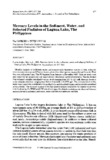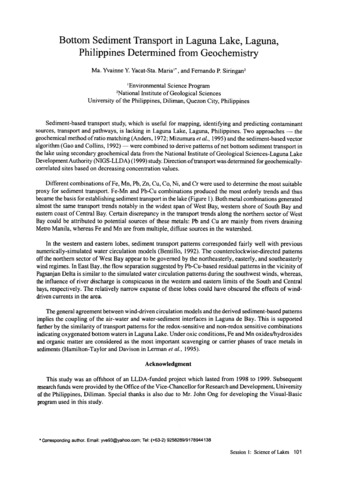Protein-degrading bacteria in the sediments of caged and uncaged sites of Lake Taal, Batangas, Philippines
- Global styles
- MLA
- Vancouver
- Elsevier - Harvard
- APA
- Help

View/
Date
2005Page views
841ASFA keyword
AGROVOC keyword
Taxonomic term
Metadata
Show full item record
Share
Abstract
The populations of protein-degrading bacteria in the sediments of caged (Leviste, Laurel) and uncaged sites (Quiling, Talisay) in Lake Taal were determined by means of the most probable number (MPN) enumeration using nutrient broth containing 12% gelatin. Protein degradation was checked through the liquefaction of gelatin. Results showed that protein degraders in the caged site had MPN of 1.53 x 1010/g dry weight of sediment while the uncaged site had MPN of 6.95 x 109/g dry weight. The populations were 4.98% and 50.0% of the total aerobic heterotrophic bacteria in the sediment for the caged and uncaged sites, respectively.
The results indicate that: (a) active protein-degrading bacteria exist in the lake which could readily degrade any proteinaceous feeds present; and (b) there is no big difference between the populations of protein-degrading bacteria in the caged and uncaged sites, the latter possibly being a caged area in the past. These protein-degrading bacteria were identified as probably Bacillus, Aeromonas and Burkholderia. Isolate B44, a Bacillus isolated from the caged site, was found to be the most rapid liquefier of gelatin (liquefaction in three hours).
Suggested Citation
Enriquez, Ma. E. V., Lopez, N. C., Barraquio, W. L., & Casauay, A. A. (2005). Protein-degrading bacteria in the sediments of caged and uncaged sites of Lake Taal, Batangas, Philippines. In M. L. Cuvin-Aralar, R. S. Punongbayan, A. Santos-Borja, L. V. Castillo, E. V. Manalili, & M. M. Mendoza (Eds.), Proceedings of the First National Congress on Philippine Lakes (pp. 77-82). Southeast Asian Regional Center for Graduate Study and Research in Agriculture (SEARCA).
Type
Conference paperISSN
1656-8099Collections
- LakeCon2003 [49]
Related items
Showing items related by title, author, creator and subject.
-
Mercury levels in the sediment, water, and selected finfishes of Laguna Lake, the Philippines
Cuvin-Aralar, Maria Lourdes A. (Elsevier, 1990)Monthly samples of sediment, water and commercially important species of fish, primarily Oreochromis niloticus and Chanos chanos , plus a few other species, were collected from the West Bay area of Laguna Lake, The Philippines ... -
Bottom sediment transport in Laguna Lake, Laguna, Philippines determined from geochemistry
Yacat-Sta. Maria, Ma. Yvainne Y.; Siringan, Fernando P. (Southeast Asian Regional Center for Graduate Study and Research in Agriculture (SEARCA), 2005) -
Gill structure, anatomy and habitat of Anodontia edentula: Evidence of endosymbiosis
Surveys and interviews were conducted to determine sources and habitat of Anodontia edentula. Results showed that they inhabit muddy substrate of mangrove areas or the adjacent mudflats, burying at 20-60 cm deep in the ...






